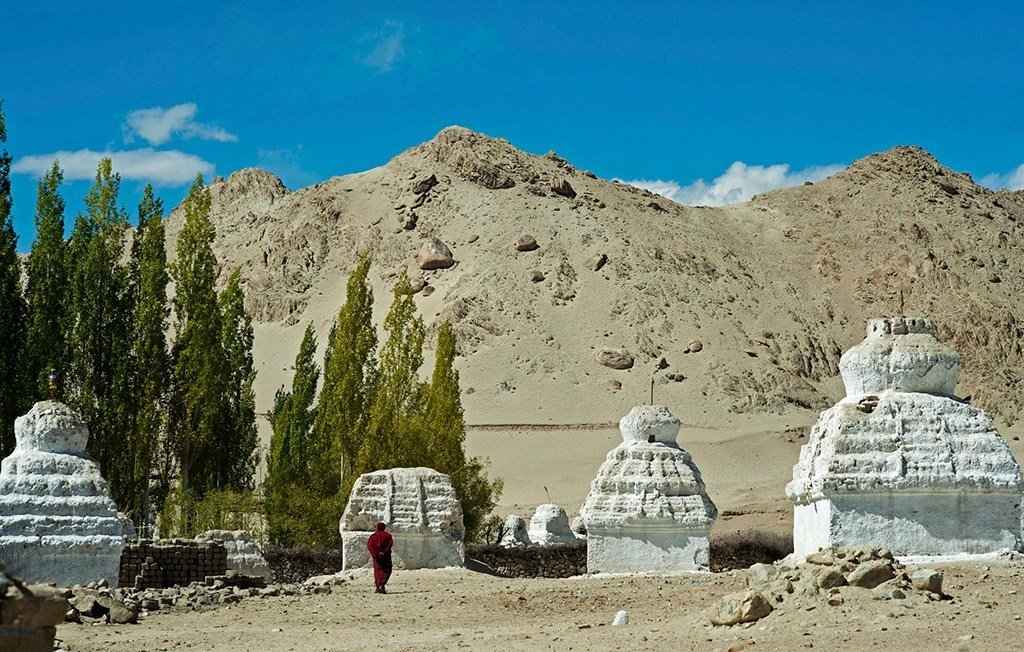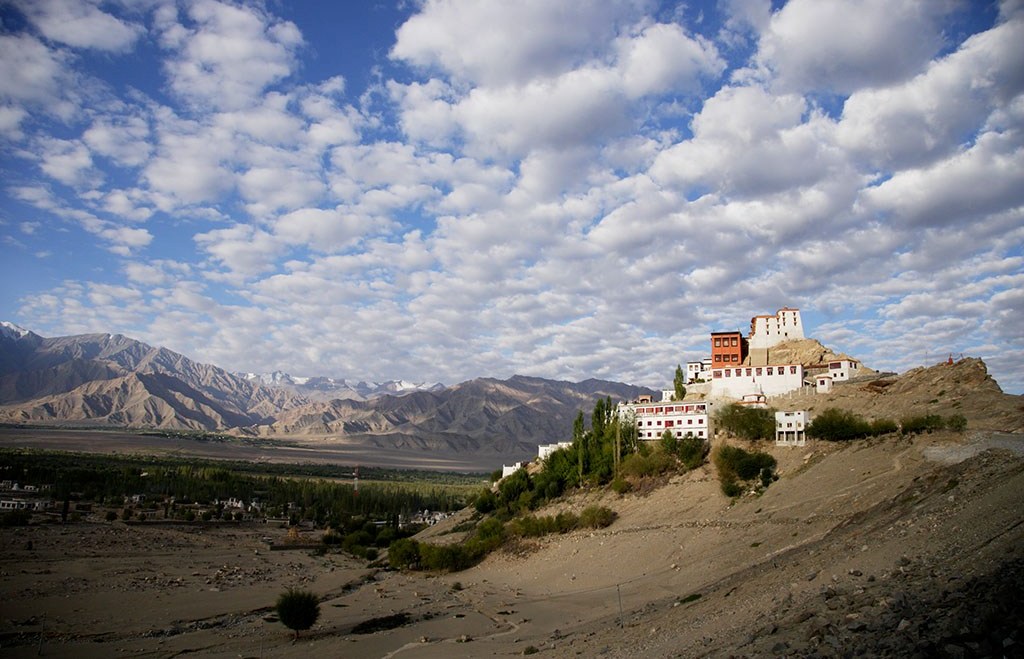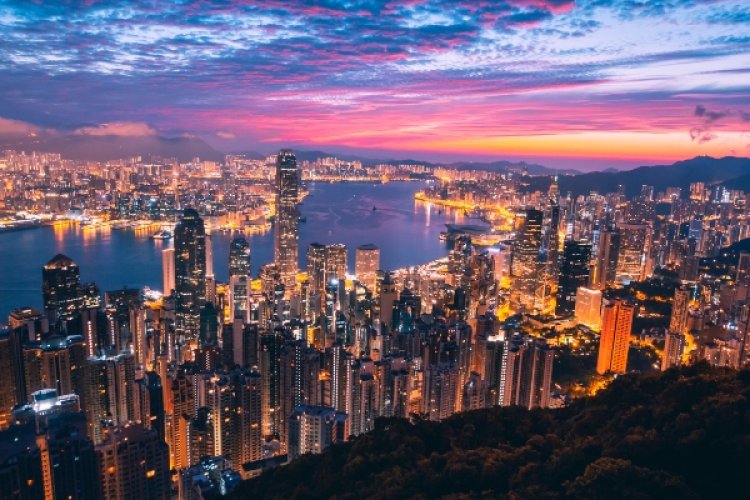Ladakh: A Moonland That’s More Tibetan Than Tibet

This weekly sponsored blog post is brought to you by Country Holidays.
To learn more about tours and packages, please email beijing@countryholidays.com.cn
or call 8587 9263.
Tucked away in the northwest corner of India, hidden among the Himalayas, Ladakh has been referred to by many names. Part of the Tibetan Plateau, Ladakhis are ethnically closer to than any other Indian races. Left on its own, Ladakhi continues to preserve much of the traditional Tibetan culture that has been lost within Tibet itself.
The landscape of Ladakh is out of this world. Endless rugged and barren plateaus are punctuated by occasional green oases along riverbanks, sand dunes with colorful hues on steep valley walls are backdrops of isolated monasteries and villages, and the spectacular snow-capped ranges of the Himalayas complete the scene.
My trip started with a flight from Delhi to Leh, the capital of Ladakh. The flight itself was a highlight as I observed the terrain changing from the lush green valleys in Kashmir and Himachal Pradesh to the moonlike plateau of Ladakh.

Leh is dominated by the Leh Palace, compared by many to a miniature Potala Palace, with the Leh Gompa rising high above the town. With a population of 100,000, Leh maintains a small-town feel. An excellent introduction to the town includes a hike to the palaces, where one can learn the history of the Ladakhi imperial families and local religion while enjoying a stupendous view of the town.
In Ladakh, Gompa means monastery. Visiting a Gompa is the key to understanding the culture, as religion plays a very important role in the local way of life. I visited several of them, including two important Gompas: Tiksey, one of the most beautiful, is set high on a mountain, and Hemis is the home to some of the most important and beautiful murals in the region. At both Gompas, I had the magical experience of seeing colorful and architecturally-pleasing buildings and beautiful Buddhist art which depicted the faith of the followers.

One of the benefits of visiting Ladakh versus Tibet is the opportunity to explore the countryside and experience untouched villages and remote monasteries. Within three days, you can explore the regions throughout Alchi and Lamayuru.
Alchi, about 3½ hours off the beaten track, has a sense of tranquility that adds to the mythical aura of the Tibetan religion. Simply sitting within its courtyard and observing the chanting monks and praying pilgrims is a wonderful experience. The adjacent village of Likir is an ideal area for hiking. I stayed at Alchi Resort near Likir, allowing me to experience the countryside at dawn and dusk, the best times to do so.
From Alchi, I traveled to stunning Lamayuru where the scenery is unbeatable. The entire monastery is nestled below an area of sand dunes that uniquely clings to a steep valley, providing some history behind its nickname “moonland.”
After returning to Leh, which felt much like a city after traveling the countryside, I enjoyed time at the bazaar, shopping for unique handicrafts including prayers wheels, tangkas (religious paintings), Tibetan carpets, and contemporary artwork by local artists.
For more on this tour, please visit: Eight Days Ladakh Village Walk – Off the Beaten Track Cultural, Village and Mountain Experience with Shakti
To learn more about Country Holidays' tours and packages, please email beijing@countryholidays.com.cn, call 8587 9263, or log onto www.countryholidays.com.cn.
Written by: Chang Then Hwee
Photos: Courtesy of Country Holidays







